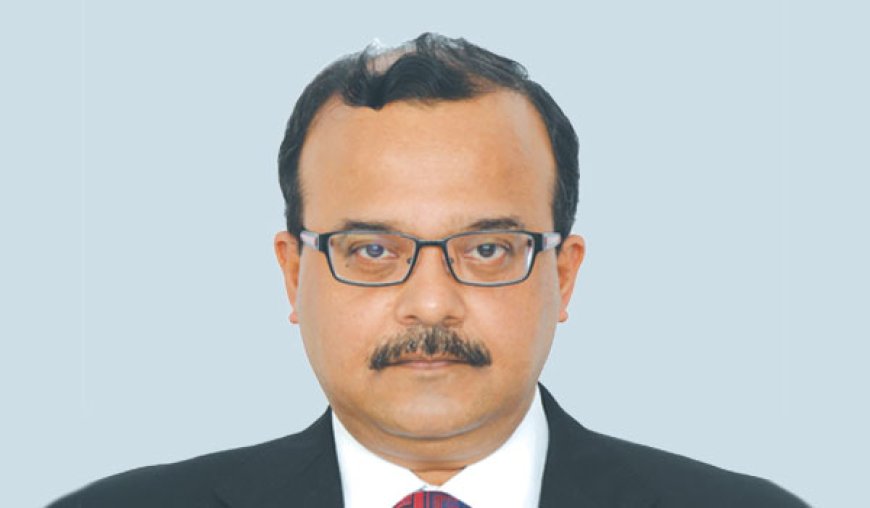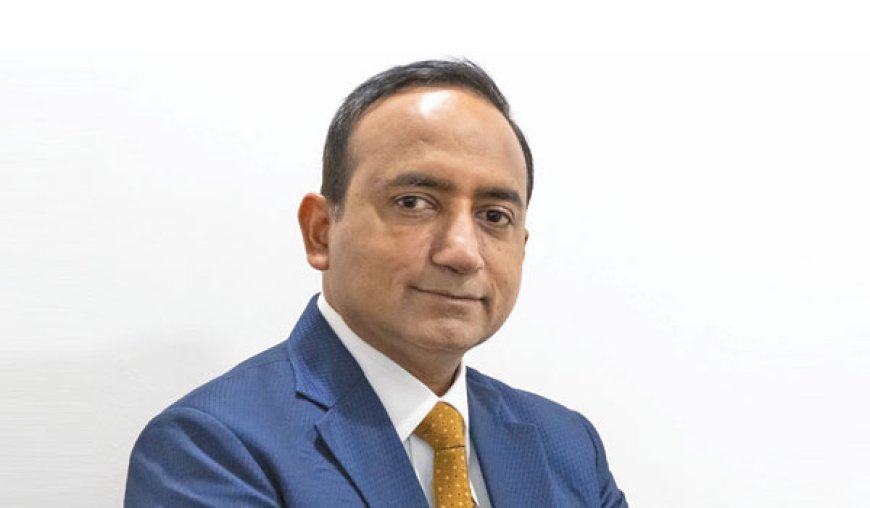Taking off Growth

Growing urban population and demand for faster reach to the destination are pushing the demand for more airports in the country. The goal is to have about 200 airports across India within five years, up from 150 today. In this scenario, Construction Times explores the market dynamics and the way forward for India’s airports infrastructure.
India is home to the world’s fastest growing air passenger market and is poised to become the third-largest aviation market after China and the US. The government has earmarked around $11 billion to build new airports and refurbish existing ones. India’s domestic air passenger traffic is expected to double in the next six years, reaching 300 million by the end of 2030.
Market trends and new opportunities

Today, the country has 157 operational airports including water aerodromes and heliports. According to Nirmal G. Humbad, Managing Director, Dorsch Consult India Pvt Ltd, there has been a significant upsurge in the air travel demand. “In FY 2023-24, the total passenger availing air transport is around 377 million, whereas, the story was quite different few years back, say in 2014 with 169 million passengers using air transport. In spite of situations like pandemic, the air travel demand remained in increasing trend with a growth of 123% in last 10 years, except setback for few years. Air cargo has also shown significant growth - from 2,280 MT to 3,366 MT, i.e. approximately 48% growth in the last 10 years,” he adds.

According to an ICRA report, the overall air passenger traffic is expected to witness a growth of around 8-11 per cent on-year to around 407-418 million in FY2025. The growth will be supported by strong pick-up in both leisure and business travel, improving connectivity to newer destinations in the domestic segment and the continued uptick in international travel. According to Vinay Kumar G, Vice President & Sector Head, Corporate Ratings, ICRA, India accounted for 4.2 per cent of the global passenger traffic in CY2023, and its share in passenger traffic has improved from 3.8 per cent in CY2019. While the global passenger traffic recovered to just 96 per cent of global passenger traffic in CY2023, the Indian airport passenger traffic revived to 106 per cent of the pre-Covid level owing to strong economic growth as well as the addition of new airport routes. The Indian air passenger traffic is expected to outperform the global trend. Air cargo has also shown significant growth - from 2,280 MT to 3,366 MT, i.e. approximately 48% growth in the last 10 years. Sthaladipti Saha,

Providing an overview of the developments happening in the Indian airports sector, Sanjay Singhania, Managing Director, EPACK Prefab, highlights, “The airport sector in India is experiencing a paradigm shift, with significant infrastructure developments aimed at increasing last-mile air connectivity. Over the past decade, 75 new airports have been built, increasing the total number to 148. The government plans to raise this number to 200 in the next four years. Recently, 15 new airport projects were inaugurated, including new terminal buildings at 12 airports.” According to him, India’s regional air connectivity scheme, UDAN, is also being boosted with an allocation of Rs 502 crore in the FY25 budget. These funds are allocated for the revival of 22 airports, initiating 124 air routes, and providing viability gap funding to enhance connectivity in the northeast. Additionally, the budget included provisions to revive 50 more airports, further supporting the expansion of the aviation sector and ensuring last-mile connectivity across the country.
Challenges
In spite of the emerging opportunities in the airport sector, there are many challenges that need to be tackled for a complete turnaround of the sector. Saha says, “The sector faces challenges such as capacity constraints which are being systemically addressed, especially in major airports like Delhi and Mumbai, environmental concerns, and operational challenges to maintain high service standards and security.”
The recent roof collapse incident reported in Delhi Airport Terminal 1 pause a challenge for airports sector in general from a safety perspective. The weather pattern and the nature itself is being impacted by global warming. The sudden downpour of rain and the extreme heat wave conditions may adversely impact the infrastructure of airports and other similar facilities. In this scenario, there is a growing need to design and develop structures considering these aspects. Humbad elaborates on this, “Airport designs need to follow guidelines and codal provisions for extreme weather conditions, high rainfall intensity, high velocity winds, drainage & catchment area considerations, earthquake considerations, fire and safety. Also, Global warming and Climate Change are other considerations which should be addressed while developing the airport Master Plans and then translate these considerations into the design of individual elements of Master Plan.”
According to him, the engineering rigor is often overlooked when the expenditure is minor, i.e., when it comes get the designs checked by a third party. “Many of airport operators neglect this aspect of third-party check. Airports Authority of India follows this good practice when it comes to review of structural designs. Such third-party checks add great value to the designs and can avoid structures to escape from disasters,” he adds.
PPP drives airport development
The Public-Private Partnerships (PPP) model is attracting private investment, leading to the modernization of airport infrastructure. These have contributed with the expansion of major airports in Delhi, Mumbai, Bengaluru, and Hyderabad, and creation of a new one in Mopa (Goa). Other airports, such as those in Lucknow and Ahmedabad, are also following this model.
Humbad also hails the PPP model in airports development as he says, “Though Public-Private Partnership (PPP) in airport sector has long gestation periods, the implementation of PPP in airport sector has become a success story. PPP format is undergoing a change. PPP at airports has added advantage in creating world-class airport infrastructure and delivering efficient and quality services to the airport passengers. Because of enhanced revenues from such models, focus on developing airports at Tier-II and Tier-III cities can be made feasible.” However, he cautions on the approach, “PPP projects allow Value Engineering but it should be done with due considerations of airport as a whole and not at the cost of Opex. PPP operators should look into Life Cycle Cost, i.e. Capex and Opex, instead of just looking for Capex while procuring capital cost equipment.”
Adoption of new designs and technologies
As India is an evolving market in airport infrastructure development, it has an edge over the global airports in terms of new designs and technology implementations. As India is setting up many greenfield airports in the country, these projects have the liberty to adopt the most modern and the latest in design and technology. Humbad elaborates, “To have better and efficient O&M of airports, enhanced usage of technology, with used cases is a must. There is a need to build a live digital model of entire airport in order to have efficient operations and data-based decision making. Tools like BIM, Digital Twin will help this purpose.”
When it comes to executing airport projects efficiently in India, contractors such as L&T are leveraging cutting-edge technologies and innovative methods. Saha highlights, “We extensively use Building Information Modelling (BIM) to create detailed 3D models of airport structures that not only enhances design accuracy but also improves planning and allows us to manage construction processes more efficiently. Digital and smart technologies incorporating Internet of Things (IoT) devices and sensors have revolutionized how we monitor construction activities, equipment, and environmental conditions in real time that enhances safety, improves resource management, and ensures that projects stay on schedule.”
Looking forward
From a contractor’s perspective, Saha says that there’s a big opportunity in upgrading existing airports—improving terminals, runways, and support systems—to handle the increasing flow of passengers and cargo effectively. In the case of new airport projects, large airport projects sudh as the Navi Mumbai International Airport and Jewar International Airport in Delhi-NCR are examples of large-scale opportunities for businesses to get involved in significant infrastructure developments.
According to Humbad, with rise in air travel demand, the concept of Twin City Airports is becoming essential; in Delhi NCR - DIAL and Jewar, in Mumbai - MIAL and Navi Mumbai, then Mopa and Dabolim in Goa. “The planning of more such six ‘Twin City’ Airports by 2030 is in the pipeline in order to decongest the existing major airports,” he adds.
Looking forward, the government has set ambitious targets to further increase the number of air travellers, and the fast-growing economy is boosting both aviation traffic and cargo, with a stronger focus on regional connectivity and sustainability. “As a result, we will see more Tier 2 and Tier 3 cities getting connected to major metros and more green airports and eco-friendly practices being adopted. I am confident that the airports and aviation sector is on a path of transformation, balancing growth with the need to address capacity, despite various challenges,” concludes Saha.





